Push Jerk vs Push Press: Difference Explained
Author:
Unlock your full potential by engaging with our experts and community! Have questions about your fitness journey or looking for expert advice on weightlifting techniques? Don’t hesitate — leave a comment below and Oleksiy Torokhtiy will provide a personalized answer and insights to help you reach your goals.
Torokhtiy is reader-supported. Some links are affiliate links, and we may earn a commission at no extra cost to you. See our disclosure page for details.
Everybody loves explosive overhead lifts and two of them that are mentioned all the time are the push jerk and the push press. But what’s different about them?
Well, that’s what we’ll be talking about – we’re diving deep into the push jerk vs push press debate to see what makes them unique and, if they have something in common, how similar they are. Because let’s not kid ourselves, they seem pretty similar at first glance.
Not identical, though, so that tiny difference between push press and push jerk is a bigger deal than you might think because it makes these two different enough that they work for different training goals.
If you’ve ever wondered how to choose, and if you even have to choose – keep reading, we have all the answers!
What is the difference between push jerk vs push press? – Movement and power generation. In the push press, you use your legs to dip and drive the bar overhead. In the other, there is no press, you drop under a bar after the initial drive, catching it in a partial squat before standing up.
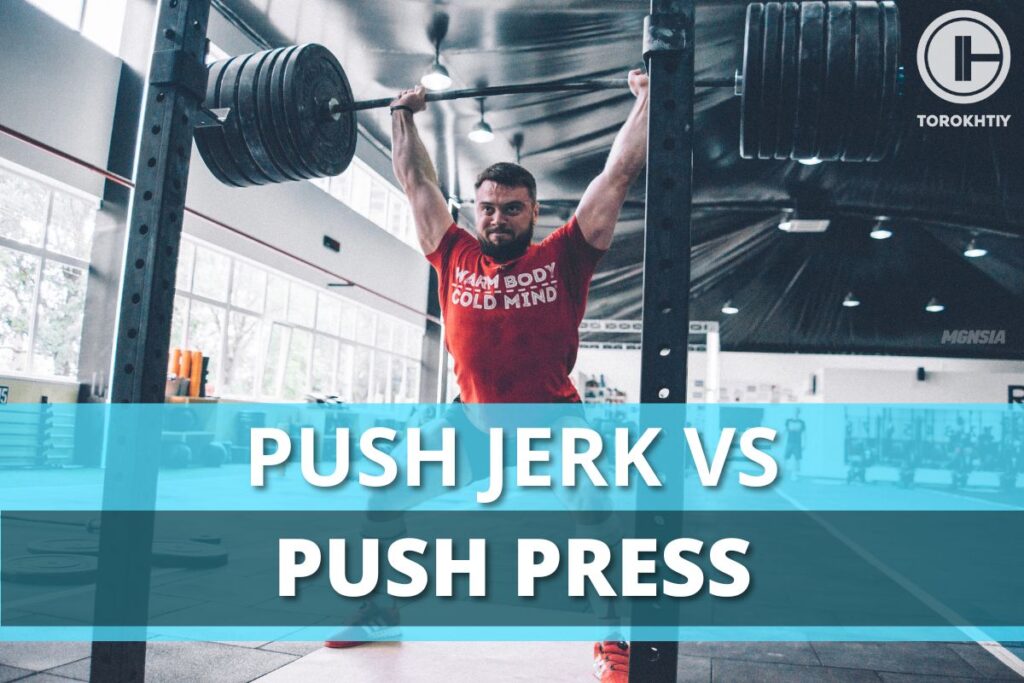
What Is Push Jerk?
It’s an explosive overhead lift where you drive a barbell overhead using both your legs and arms and because of that explosiveness, it’s great for you to train how to generate power quickly. It seems pretty simple when you’re looking at someone else doing it, but if you’ve ever given any lift a try, you know it’s harder than it looks.
The push jerk has a lot of benefits and it’s a staple for many people, mostly because of how effective it is at improving your explosive power and strength, especially in the legs, core, and shoulders.
Difference between Split and Push and Power Jerk
The biggest difference between these 2 is in the way you position your body to catch the bar overhead. In the push and power jerk, you drop in a partial squat with both feet still parallel and shoulder-width apart. On the other hand, in the split jerk, you catch the bar in a lunge; one foot forward, the other one back, which gives you more stability.
The power jerk is kind of like the push jerk, but you catch the bar in a wider stance because you jump and drop to a wider position.
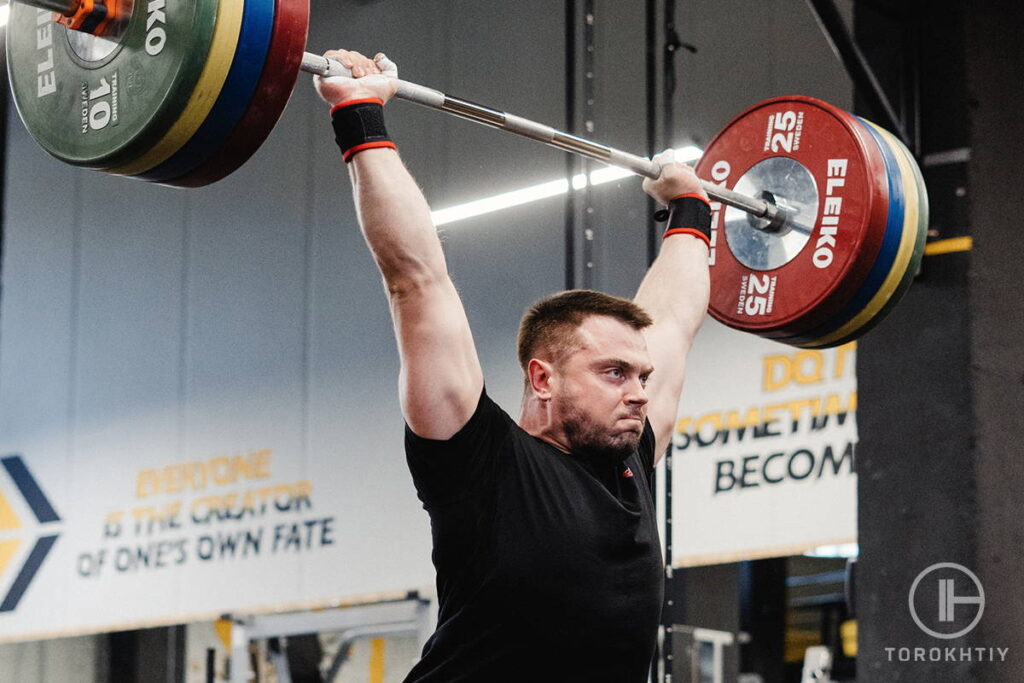
How to Do Push Jerk?
Stand with feet shoulder-width apart and the bar on your shoulders. Dip into a quarter squat and keep your torso upright. From here, explode up by extending your hips and knees and use your legs to drive the bar up.
As the bar rises, use its momentum and quickly drop under it by bending your hips and knees, and then catch it with your arms completely extended. Your elbows should now be locked out and your body should form a straight line.
Stand up and there you have it – you’ve done a push jerk.
What is Push Press?
The push press is an overhead lift that blends strength and power. It was shown in a study that it produces the greatest power when you lift about 75% of the maximum weight you can handle, however that will depend on the individual. You start with a little dip in the knees and then that’s followed by an explosive drive from the legs to push the bar up.
Unlike a strict press, where your upper body does the work, the power for the push press comes from your legs. They generate momentum and make it easier for you to lift heavy weights up.
In the jerk you drop down but in the push press once you extend your leg during drive you don’t bend them again but press the bar overhead instead of dropping under.
It’s a great upper body exercise, but it also engages your legs and core.
Follow us!

Free!
Get a 2-week Weightlifting Program as a bonus for the subscription to kickstart your training plan!

Free!
How to Do Push Press?
You stand with your feet shoulder-width apart and the bar resting across the front of your shoulders. Palms are faced forward and elbows are pointed down.
Bend your hips and knees a little to a quarter squat, then explode up by driving your legs into the ground; this will help propel the bar overhead as you press it up. At the top, extend your arms completely with elbows locked out and hold the weight overhead for a moment before you lower it back to your shoulders. Make sure to lower it back in a controlled manner!
Repeat for how many reps you want and enjoy the benefits!
Push Jerk vs Push Press
You can’t really tell the difference between push press vs push jerk unless you put them side by side and really compare across a few categories, so let’s do that. Although they have a lot of similarities in terms of force, power, and duration, they’re more different than you think.
1. Technical Differences
When you look at them, the biggest difference is noticeable right away – the technical execution.
In a push press, you start by bending your knees a little and then you use that leg power to help push the bar overhead. The entire lift is done in one smooth motion – dip, drive, and press. The focus is on using your legs to get that momentum, but after that it is your upper body that is doing most of the work to get the bar up and lock it out overhead.
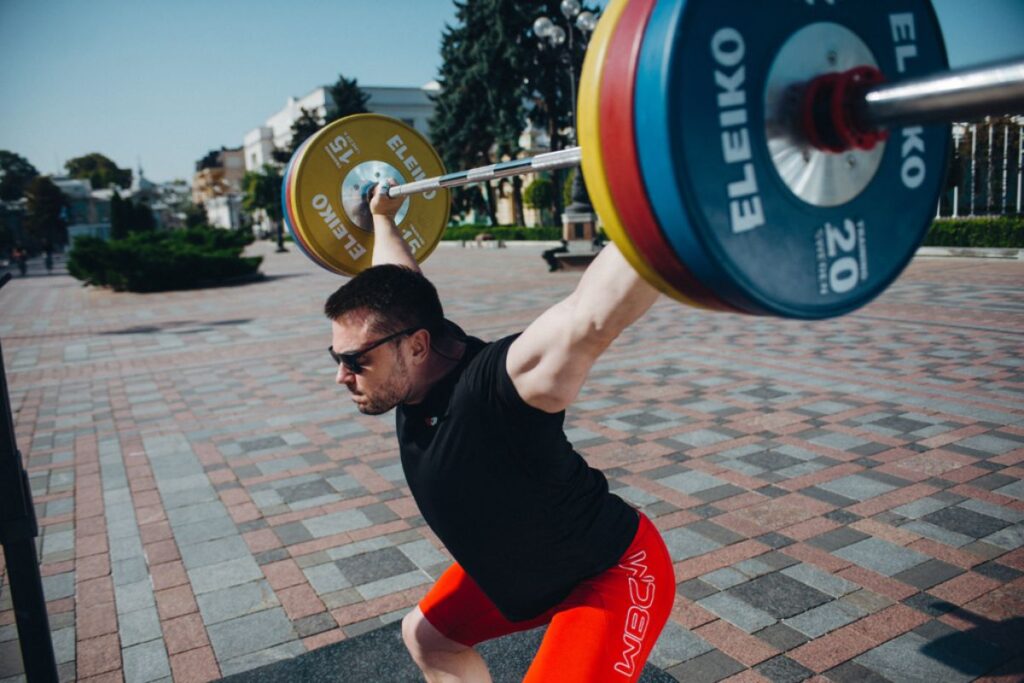
When it comes to push jerk, though, things are a bit different because there’s an extra step. After that initial drive with your legs, you don’t press the bar overhead and instead, you quickly drop under it and catch it in a partial squat before standing up.
This means that you’re using the momentum from your legs to “jerk” the bar overhead and then catch it with locked arms while your legs stabilize the weight. The push jerk is more about timing and coordination because you need to move quickly to get under the bar and stand up with it overhead.
It’s more efficient if you’re lifting heavy because you’re not relying as much on your shoulders and arms to press the weight up.
Save it for easy access!
Bookmark this page now to access the program and instructional videos anytime, anywhere.
Stop wasting time searching during your gym sessions.
2. Working Muscles
Both the push jerk and the push press engage a lot of the same muscles, but the difference is in how they’re used.
In a push press, your shoulders, triceps, and upper chest are doing most of the heavy lifting once the bar leaves your shoulders. Your legs help get the bar moving, but it’s really your upper body that finishes the job and presses the bar overhead.
This is why the push press is such a great exercise for building strength in your upper body, and it’s especially good if you want to work on your shoulders and triceps.
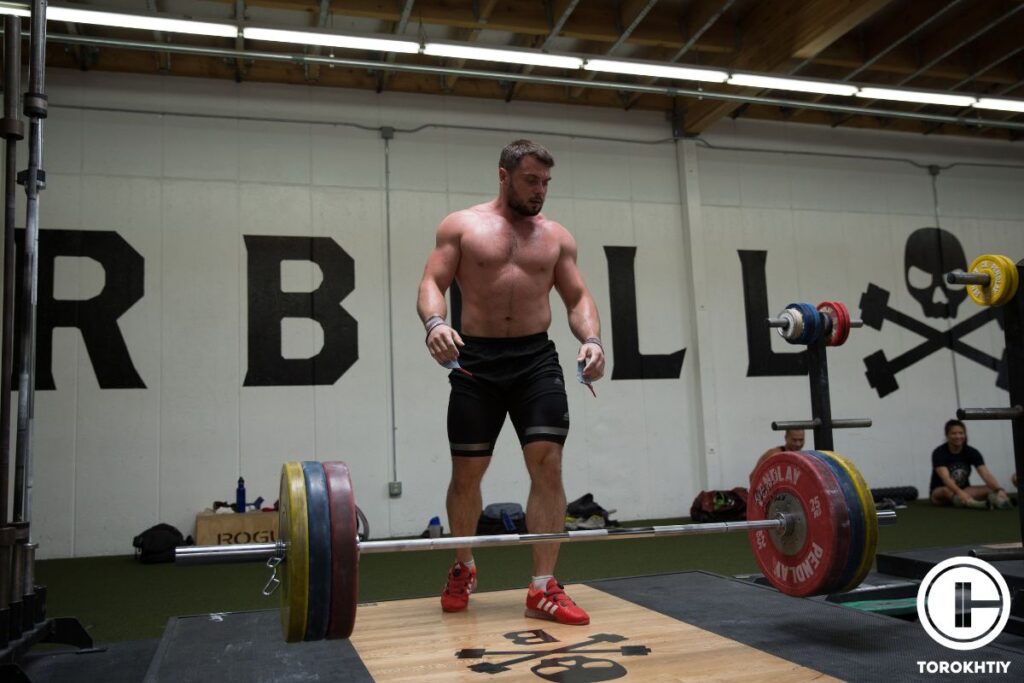
Both use the legs and core equally, but what’s different is how the bar is moved. So in the push press, you press the bar overhead with your shoulders and triceps. In the push jerk, there’s no pressing – after driving with your legs, you focus on stabilizing the bar overhead as you catch and stand up.
The push jerk lets you lift heavier weights because you’re using a strong leg drive to get the bar moving, and then your legs also help catch the bar in a squat position.
This movement pattern spreads the work more evenly across your body and it’s what makes the push jerk a great exercise for building explosive power and coordination in your entire body.
Tips From the Champ
In my experience, the push jerk is your go-to when you need to handle heavier loads with explosive power, also it is the best tool for setup dip & drive form. But, if you’re looking to build pure pressing strength and overhead stability, stick with the push press.
Olympic Weightlifting Champion
3. Mobility Requirements
Mobility plays a big role in both the push jerk and push press, but the demands are a little bit different.
The push press mostly needs good mobility in your shoulders. If your shoulders aren’t flexible enough, you will probably have a hard time pressing the bar overhead without straining your back or losing your form. Thing is, with a push press there’s more room for error so even if your mobility is not great you still may be able to do it.
You’ll need some mobility in your hips and ankles, of course, but that’s pretty minimal because you’re only doing a slight dip with your knees before pressing the bar.
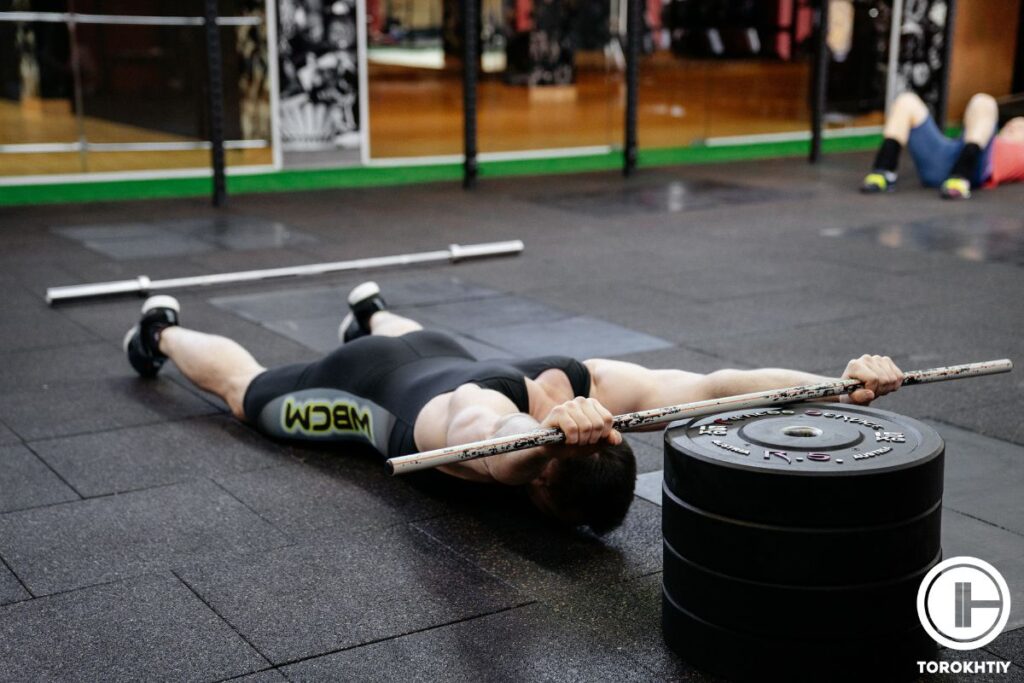
In terms of mobility, the push jerk will ask a lot more from your body. You need to have good shoulder mobility to catch the bar overhead and squat up, which demands more time in the overhead position and stricter mobility. When the weight is heavy, you’re often forced into a deeper squat during the catch, which places a lot of demands on your ankles, hips, thoracic spine, and shoulder.
And plus, you have got to be able to drop quickly into a partial squat, and that’s going to need a decent amount of mobility in your hips and ankles.
If you’re tight in any of those areas, there’s little to no chance you won’t struggle with the push jerk because it needs a lot of coordination and quick movement.
Don’t let this bum you out, we do have some good news for you; if you work on your mobility (mobility drills, stretching), you’ll get better at both of these over time.
What Should You Choose – Push Jerk or Push Press?
Well, you don’t really have to choose and your best bet is doing both of them. But if you insist on picking one over the other, the answer as to which one you should choose is – it depends.
If you want to build overall strength and power while also working on your pressing game, then push press is obviously a better choice. A lot of coaches use it to improve the athletes’ physical development, too.
It’s a superstar at developing strength and power in the shoulders and it’s a bit simpler than the push jerk because it relies more on a smooth press rather than complex timing.
But if you want to improve your explosive power and coordination, look no further than the push jerk. It’s harder to do because you need to drop under the bar and catch it in a squat, so it’s more dynamic.
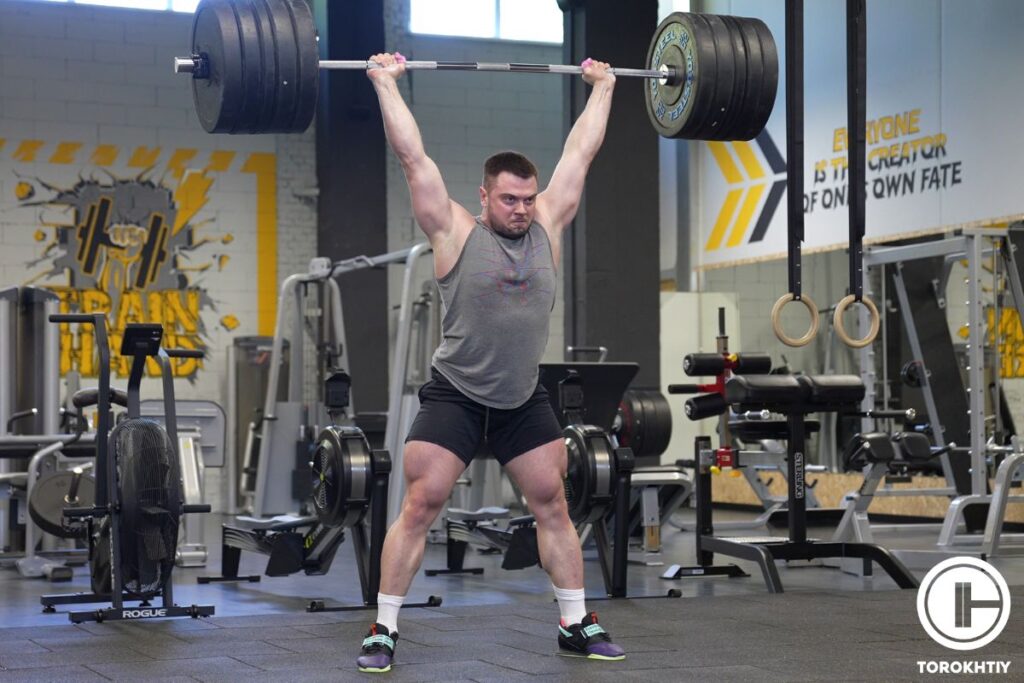
But you’ll be able to lift heavier and if you’re already good with basic lifting and want to push yourself a little further, the push jerk will be better because it will engage your legs and core way more than the push press does.
So… It really boils down to what you want to work on, what your priorities are, and naturally, what you’re able to do. if you’re a newbie, then doing the push jerk might be too ambitious and you’re likely to mess it up.
Conclusion
To warp this whole thing up, what you choose depends on what results you’re going for. The push press is excellent if you want to get stronger, more powerful legs but also shoulders and triceps, and the push jerk is great for people who want to lift heavier weights and add some peak explosiveness in their session.
Both have their perks, so unless you have a really, really good reason to only do one, we highly recommend doing both.
Which of these will you do next? Have you tried both of them out and if you have, which one do you like better and why?
We want to hear what you have to say on this, so take a second to leave a comment! We’re curious to know what works best for you!
Also Read:
References:
- Chris Bishop, Shyam Chavda, and Anthony N. Turner, “Exercise Technique: The Push Press,” Strength & Conditioning Journal 40, no. 3 (2017): 1.
- Jason P. Lake, Peter D. Mundy, and Paul Comfort, “Power and Impulse Applied During Push Press Exercise,” Journal of Strength and Conditioning Research 28, no. 9 (2014): 2552-2559.
- Marcos A. Soriano, Ester Jiménez-Ormeño, Jason Lake, and John J. McMahon, “Kinetics and Kinematics of the Push Press, Push Jerk, and Split Jerk,” Journal of Strength and Conditioning Research 38, no. 8 (2024): 1359-1365.
- Marcos A. Soriano, Jason Lake, Paul Comfort, Timothy J. Suchomel, John J. McMahon, Ester Jiménez-Ormeño, and Pilar Sainz de Baranda, “No Differences in Weightlifting Overhead Pressing Exercises Kinetics,” Sports Biomechanics 21, no. 10 (2021): 1-13.
- Marcos A. Soriano, Timothy J. Suchomel, Paul Comfort, “Weightlifting Overhead Pressing Derivatives: A Review of the Literature,” Sports Medicine 49, no. 6 (2019): 867-885.
- Photos by Torokhtiy Media Team.
Why Trust Us?
With over 20 years in Olympic weightlifting, strength training, nutrition coaching, and general fitness our team does its best to provide the audience with ultimate support and meet the needs and requirements of advanced athletes and professional lifters, as well as people who strive to open new opportunities and develop their physical capabilities with us.
By trusting the recommendations of our certified experts in coaching, nutrition, and sports training programming, as well as scientific consultants, and physiotherapists, we provide you with thorough, well-considered, and scientifically proven content. All the information given in the articles concerning workout programming, separate exercises, and athletic performance, in general, is based on verified data.
The product testing process is described in more detail here.
Author: Oleksiy Torokhtiy
Olympic Weightlifting Champion
Best Results: Snatch – 200 kg,
C&J – 240 kg
Oleksiy Torokhtiy is a professional athlete boasting 20 years of experience in Olympic weightlifting. With multiple European and World titles under his belt, he has showcased his prowess in two Olympic Games (Beijing 2008 and London 2012). Upon concluding his illustrious career, Oleksiy dedicated himself to coaching. By 2022, he had conducted over 200 weightlifting seminars worldwide. He is the visionary behind an international sportswear and accessories brand known for its motto, “Warm Body Cold Mind.” Additionally, he is an esteemed author and the creator of a series of training programs and eBooks.




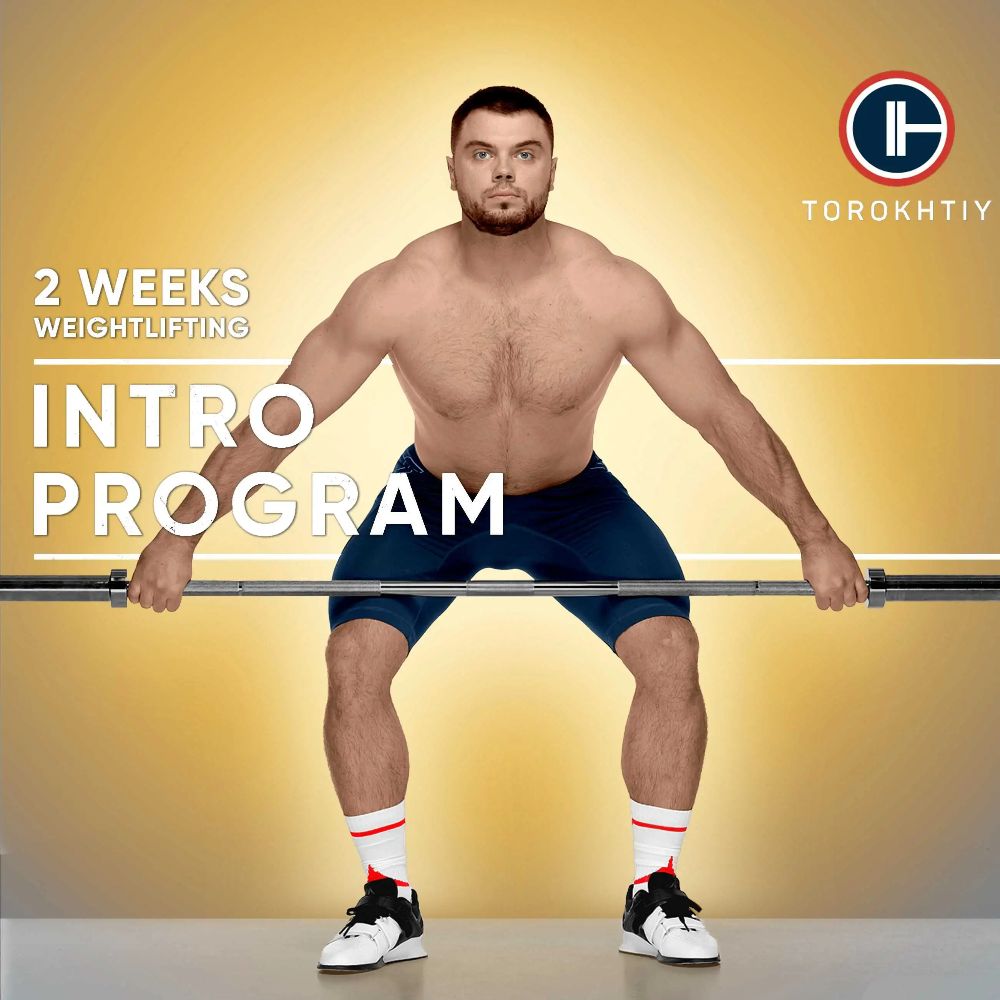
Still have questions after reading our article? Unlock your full potential by engaging with our experts and community! Don’t hesitate — leave a comment below and Oleksiy Torokhtiy will provide a personalized answer and insights to help you reach your goals.